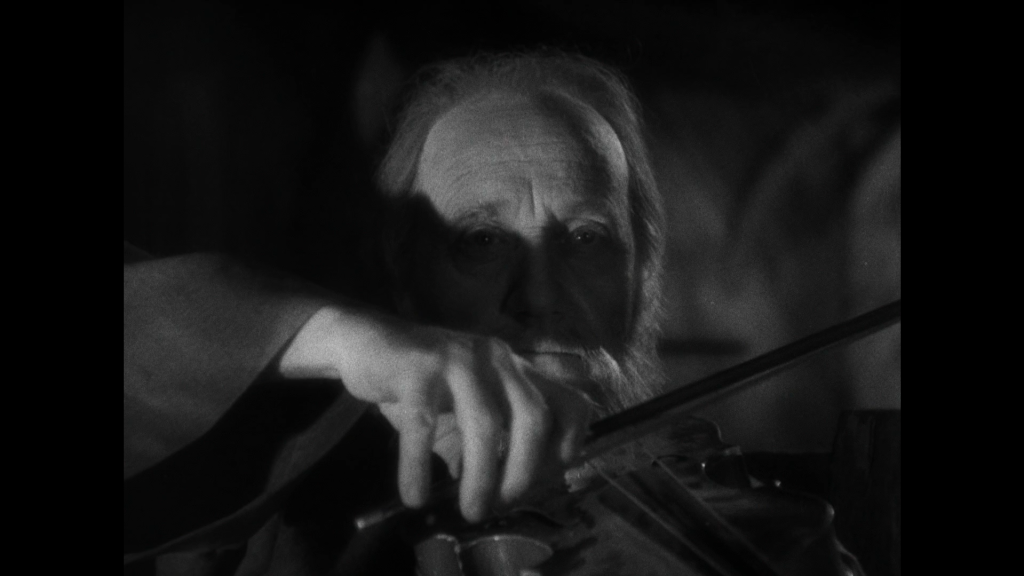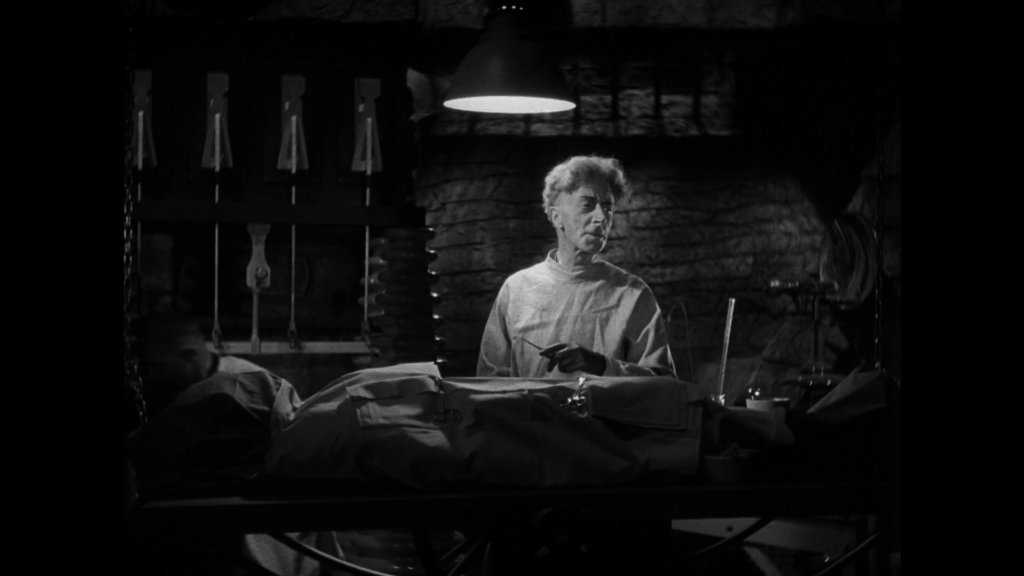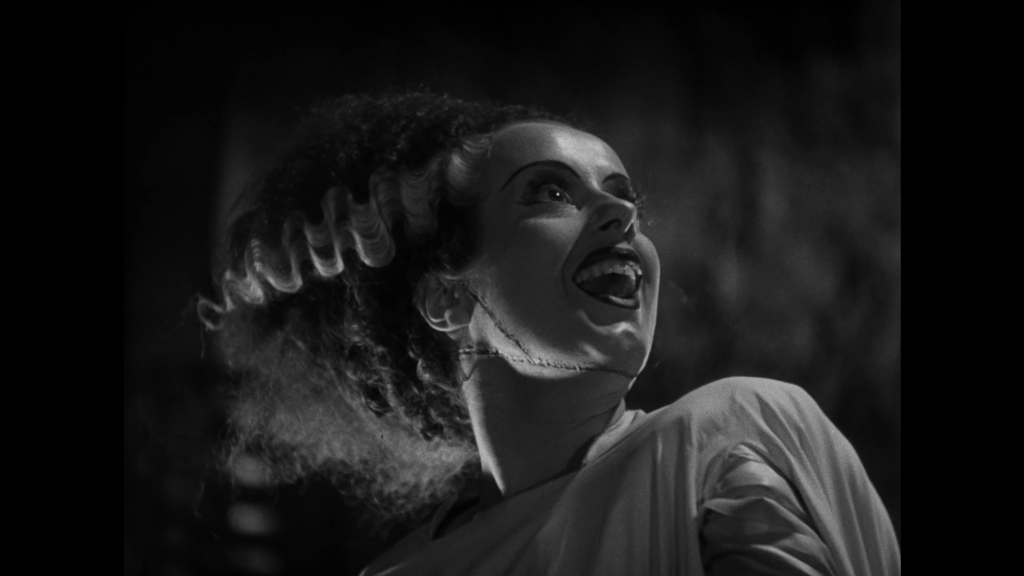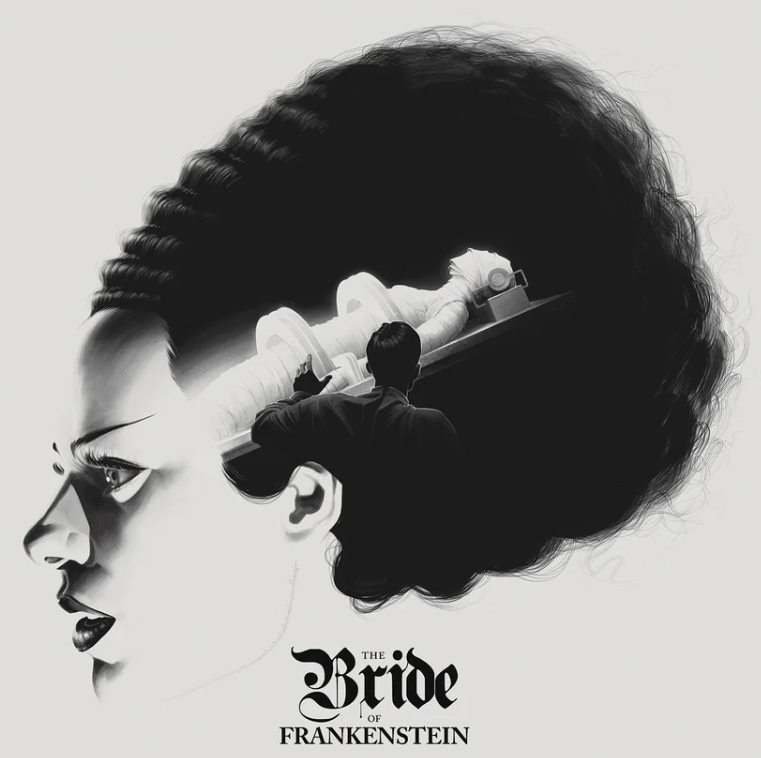James Whale takes everything that worked in Frankenstein and tunes it with a conductor’s ear for rhythm and mischief. The result is a sequel that laughs in the dark, then lets the dark laugh back. It opens with a cheeky prologue that turns Mary Shelley into the narrator of her own nightmare, then slides into a world of crumbling castles, storm-tossed skies, and laboratories that look like cathedrals built by mad electricians. You can feel the director’s grin in every cut. The film is never just spooky or just funny. It is both at once, like a tango between a skeleton and a stand-up comic.

Boris Karloff’s Monster remains the aching heart of the piece. He moves with a bruised dignity, speaks in halting words that land like small prayers, and wears his loneliness like a heavy coat. The scenes with the blind hermit still glow with humanity. Fire crackles, bread breaks, and for a few minutes the Monster is not a headline or a horror but a person who wants warmth and a friend. That tenderness gives the later rampages a tragic undertow. When he roars, you remember why he learned to hurt.
Around him, the mortals chew the scenery with gourmet finesse. Colin Clive’s Henry Frankenstein is all nerves and noble intentions that collapse at the first sign of an interesting voltage. Ernest Thesiger sashays through as Dr. Pretorius, a velvet menace with the voice of a dry martini. He is both Mephisto and maître d’, presenting homunculi in bell jars as if unveiling a tasting menu. The sequence is bizarre and wonderful, a carnival trick that announces the film’s playful streak. It also underlines the theme that creation, once it becomes a parlor game, stops respecting the lives it makes.

Technically, the film is a feast. John J. Mescall’s cinematography turns shadow into architecture. The lab glints like a pipe organ of copper and glass. The graveyard and the gallows feel carved out of night itself. Franz Waxman’s score snaps and swoons, punctuating the film with musical lightning strikes. Even the comic relief from Una O’Connor, all shrieks and side-eye, fits the operatic mood. There is a theatricality here that never tips into stiffness. Whale keeps the camera curious and the pacing lively. You always feel that another surprise is waiting just offscreen, polishing its bolts.
Now for the gripe that cannot be avoided. The Bride herself is a triumph of design and a triumph of timing, and yet she shows up with the punctuality of a celebrity cameo. Elsa Lanchester glides in with that white-streaked beehive, fixes the world with a regal hiss, and then the party ends. For a film named after her, five minutes feels like a tease. The character is so instantly iconic that you want another reel of her, perhaps several. To be fair, Lanchester also appears as Mary Shelley in the prologue, which gives her a ghostly presence at both bookends. But the creature promised by the title is a dessert course served at closing time. You do not leave hungry for spectacle, you leave wishing the main attraction had more to do than glare beautifully and reject the groom.
Even with that frustration, the film earns its classic status. It understands that horror works best when it cares about the people who are frightened. It also understands that the line between awe and laughter is very thin. One minute you are watching a monster plead for kindness, the next you are smirking at Pretorius toasting to “a new world of gods and monsters.” The tonal blend is daring and, more importantly, deliberate. This is not chaos. It is craft.

So, yes, the Bride is fashionably late and exits before dessert is cleared. Yet her brief appearance burns itself into memory, and everything that leads to her is staged with style and sly intelligence. Bride of Frankenstein is the rare sequel that becomes its own strange jewel. It winks, it howls, it sings, and it leaves you charged like a lightning rod. If only the title character had been given more time to dance, the spark would feel like a blaze.

